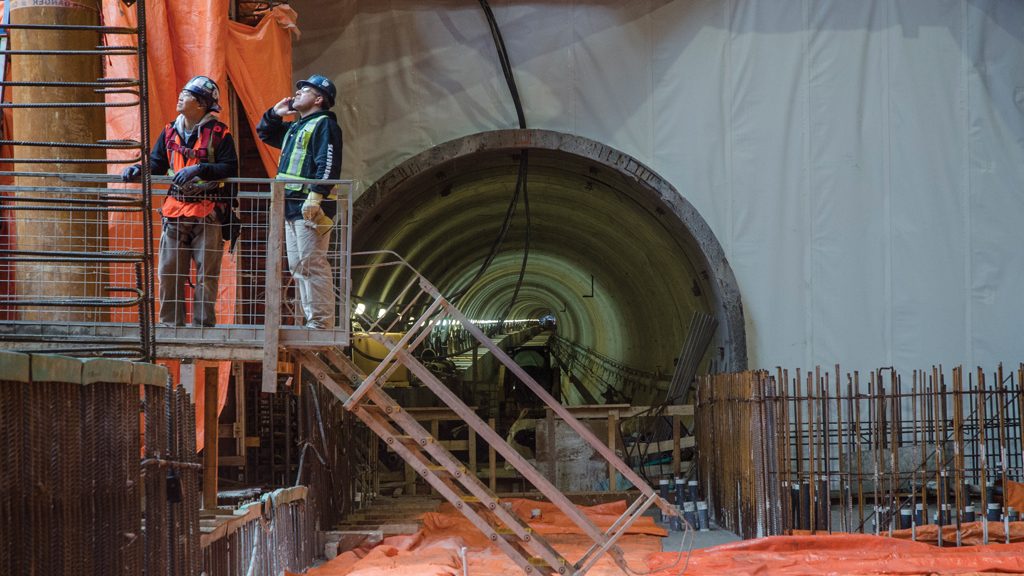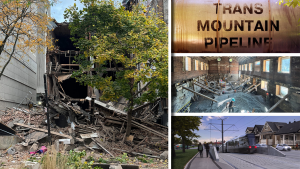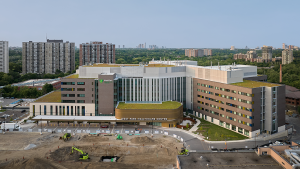The next month will be critical in planning and procuring Toronto’s new Ontario Line as proponents hustle to undertake a market sounding of industry stakeholders ahead of a rapidly approaching deadline for issuance of an RFQ for the project.
Infrastructure Ontario (IO) president and CEO Ehren Cory and Metrolinx president and CEO Phil Verster were panellists on day two of the Canadian Council for Public-Private Partnerships conference held in Toronto Nov. 18 and 19, laying out timetables and challenges associated with delivering the GTHA’s $28.5-billion transit plan.
Besides the Ontario Line, the panel also addressed the Scarborough Subway Extension, the Yonge North Subway Extension, the Eglinton Crosstown West Extension and the GO RER electrification job.
The biggest procurement rush is with the $11-billion, 16-kilometre Ontario Line that will run east-west from Ontario Place to the Ontario Science Centre in Toronto. The mega project was just announced by Premier Doug Ford in April but it’s scheduled to go to market shortly with a spring RFQ followed by an RFP later in 2020. The winning bidder to be announced in the spring of 2022 and completion is targeted for 2027.
“The next six weeks is our opportunity to get your feedback on how we tackle those things,” Cory said.
The price tag of $28.5 billion is underestimating the value of upcoming transit work in the GTHA, Verster said. There will be a further $12 billion spent on the GO RER electrification project and billions more on other LRT projects and stations and state-of-good-repair projects, he said, adding to the urgency for IO and Metrolinx to consult with planners and constructors to get projects right.
The quality of the projects is dependent on the partnerships Metrolinx and IO engage in, said Verster.
We are rethinking how risks are shared and repositioning the roles of everybody in that chain,
— Phil Verster
Metrolinx
“When we are aligned, there is a much better chance of achieving success,” he said.
Each project is unique, Verster said. The Ontario Line is the “crown jewel,” he said, and it’s very important to Metrolinx in terms of connectivity, in part because it represents a departure from the radial pattern of transit lines that tends to develop as jurisdictions overcome long periods of transit stagnation.
“Radial is not going to get us the maximum economic impact,” Verster said.
He admitted Metrolinx is rethinking the Yonge North subway extension route as currently configured, with the thinking there could be more “bang for the buck” with an alternate route.
The Eglinton West extension is critical to servicing the Toronto airport employment zone, Verster said, but that project too has its problems given that it is very complicated to get the final two “dots” (stations) in the right place approaching the airport.
Verster told the audience it could expect the procurement of each project to reflect the subtle differences in the projects. P3s are evolving to be more than about project financing, he said.
“A P3 is a range of different solutions and we need to figure out what part of that range in the partnership is going to do tricks for us and going to help us be effective in the objectives we have for the project,” Verster explained.
“We are rethinking how risks are shared and repositioning the roles of everybody in that chain to see how risk can best be managed. There’s no one solution that works best. There is the right solution for the right case.”
The market sounding will deal with four basic questions, Cory said — it will attempt to gauge market interest and capacity, it will identify how to reduce risk and accelerate project delivery, it will assess various project delivery models and risk allocation for new projects, and it will seek stakeholder advice on such issues as what are the highest-priority early works that could be undertaken ahead of the major projects.
Key goals include attracting a larger bidding pool, developing new risk-sharing mechanisms, improving project evaluation criteria — this, to attempt to understand why some firms in the marketplace are hesitant to get involved in major P3 projects these days, Cory said — integrating transit and development better including looking for opportunities for transit-oriented developments, and looking to identify situations when projects should be broken up.
Verster later told delegates they should be prepared for more use of the alliancing model of procurement, which, he explained, is characterized by a greater partnership between the owner and the contractor.
One part of the Union Station works is being done using an alliancing model, he said, and since other components of the corridor near Union are similar to the station itself, the alliancing model will likely be used for that other corridor work as well.
“Because this is the first alliancing contract in this sector in Canada, I think there is going to be an exciting period now where people learn what alliancing is about,” Verster said.
“It’s about behaviours and how do we put our doubts aside and build trust as a single team, that’s owner and contractor, and build a single team with a single objective and a single performance regime that incentivizes the performance in terms of delivery.”
Verster said he had done alliancing contracts in the U.K. and at times it is more challenging than typical P3s.
“You have to really muscle up in terms of capabilities and behaviours and you have to fix the issues together,” he said.











Recent Comments
comments for this post are closed